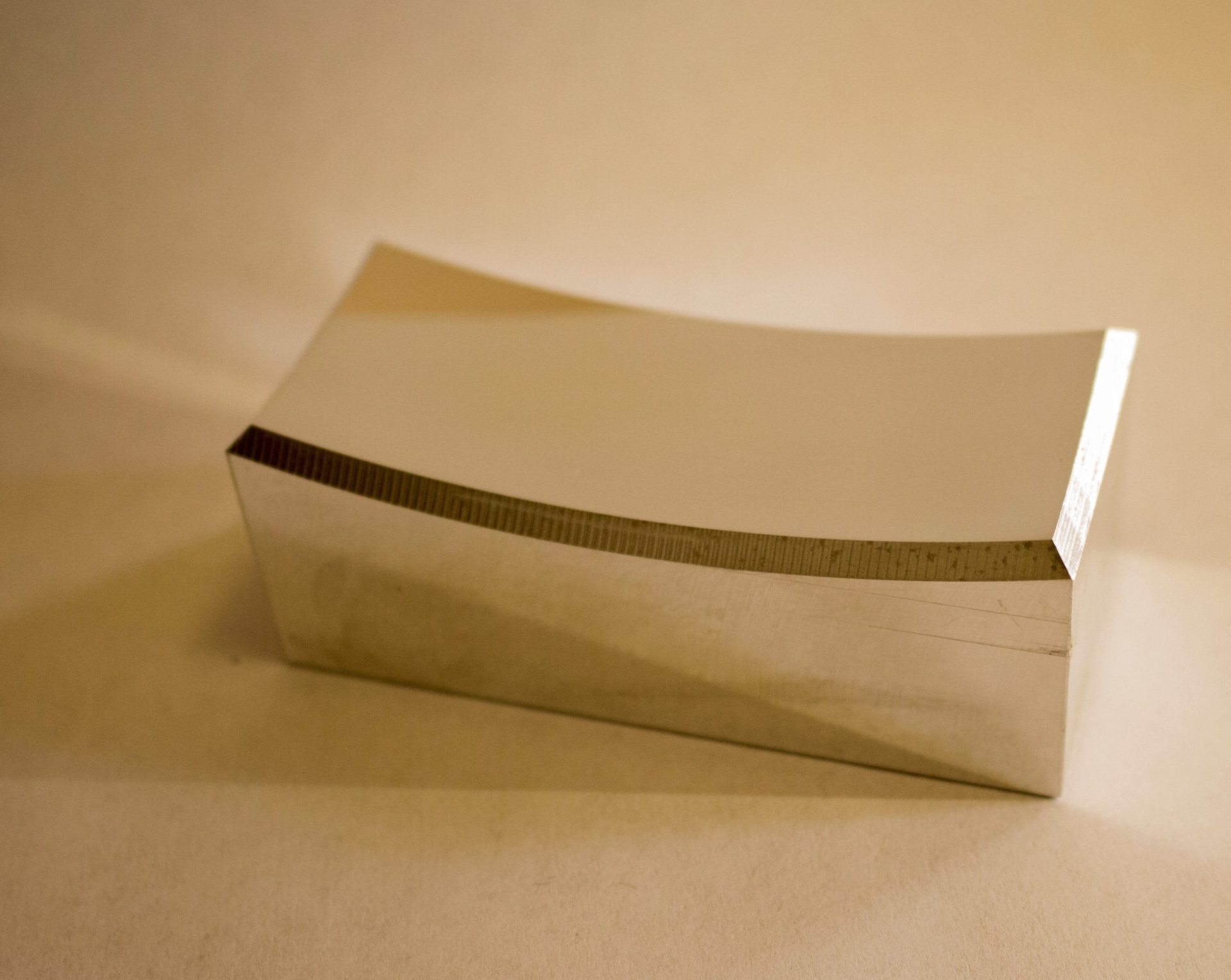Using a single-point diamond tool to produce high-precision components with a fine surface finish requires an understanding of the proper materials. The material being machined must be chosen carefully to ensure that it can be cut effectively with a diamond tool. Hard materials require different diamond grades or cutting parameters than softer materials. Nanophorm has experience with nearly every “diamond-machinable” material, along with plating for those that are not.
These materials are often used in applications that require high strength and durability.
These materials are often used in optical components due to their optical clarity and low cost.
These materials are often used in optical and high-precision applications due to their optical clarity and high thermal and mechanical properties.

| Material | Surface Finish | Cost | Availability | Lead Time |
|---|---|---|---|---|
| Aluminum Alloys (6061 and 2024 being most common) | BETTER | LOW | HIGH | SHORT |
| Copper Alloys (101 OFHC and 110 being most common) | BEST | LOW | HIGH | SHORT |
| Brass | BETTER | LOW | HIGH | SHORT |
| Bronze | TYPICAL | MED | HIGH | MED |
| Beryllium Copper alloys such as MoldMax HH | TYPICAL | HI | LOW | MED |
| Tin | DIFFICULT | HI | MED | MED |
| Antimony | DIFFICULT | HI | MED | MED |
| Material | Surface Finish | Cost | Availability | Lead Time |
|---|---|---|---|---|
| PMMA - Acrylic | BEST | LOW | HIGH | SHORT |
| COP - Zeonex | BETTER | HI | MED | MED |
| Polycarbonate | CHALLENGING | LOW | HIGH | SHORT |
| PEI - Ultem | CHALLENGING | HI | MED | MED |
| COC - APEL, Topas | BETTER | HI | MED | LONG |
| Polyester - OKP1, OKP4, OKP4HT | CHALLENGING | HI | LOW | LONG |
| Polystyrene - Rexolite 1422 | BETTER | LOW | HIGH | SHORT |
| Material | Surface Finish | Cost | Availability | Lead Time |
|---|---|---|---|---|
| Germanium | BEST | MED | MED | MED |
| Zinc Selenide | TYPICAL | HI | LOW | LONG |
| Zinc Sulfide | TYPICAL | HI | LOW | LONG |
| Chalcogenide Glasses - Schott ID Glass | TYPICAL | MED | LOW | LONG |
| Indium Antimonide, Mercury Cadmium Telluride | BETTER | HI | LOW | LONG |
| Silicon | CHALLENGING | HI | HIGH | MED |
| Material | Surface Finish | Cost | Availability | Lead Time |
|---|---|---|---|---|
| Alumiplate | BETTER | HI | MED | LONG |
| High-phosphorous Electroless Nickel Plating | BEST | MED | HIGH | SHORT |
| Copper - Nickel Plating | BETTER | HI | LOW | LONG |
| Copper Plating | BEST | MED | HIGH | MED |